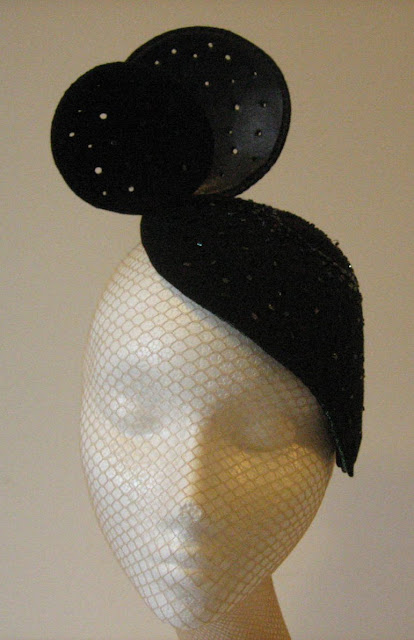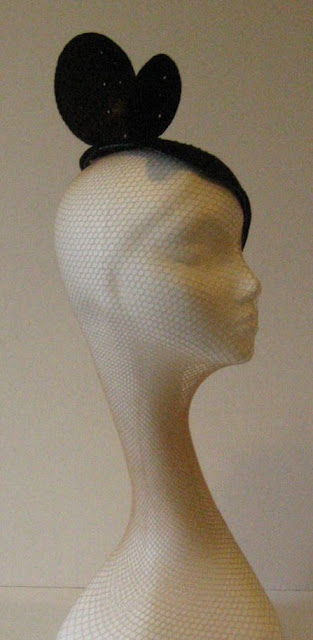Week One: Metals (specifically copper).
We're having our inductions into the jewellery (or jewelry, if you're American!) workshops for the next couple of weeks.
I've been looking forward to this part of the course!
This week we were looking at things you can do with copper - and the processes you go through to use it. These apply to most of the metals we might choose to use, but copper is relatively cheap, obviously, so good for practising and potentially mucking up.
First we used the torches to anneal the metal (i.e. heat it till it glows). That alters the molecular structure of the metal, making it soft enough to work with. Then you quench it with water (some metals have to be allowed to cool slowly, I've read since, but copper is fine quickly cooled in a bowl of water). It's amazing how quickly the water makes the metal going from glowing so hot that it would burn you, to cold to the touch, just by dunking it into a bowl of cold water.
 |
| M. annealing her metal. |
Then we 'pickled' the metal in a tub of weak sulfuric acid solution to remove (or in some cases partially remove) any blackening and charring caused by the flame, that might stain the metal when working on it (if making a final piece you'd be more careful to remove it all, obviously, unless you wanted actually to keep some), and the metal was ready to work with.
The annealing and pickling makes the copper turn a really pretty shade of pink.
When we finished with the metal, Liz, the tutor, showed us the various tools, and some of the processes that you can use on the metal. The main ones were the letter and number punches, the metal rollers, and what I called, when I got home, the 'domey-blocky-thingy' (actually a doming / dishing block).
The thing that caught my interest first was the metal rollers. High pressure steel rollers, operated by hand, and a bit like a pasta machine, in that by gradually tightening the rollers, and re-rolling the metal through them, you can stretch and thin the metal. Apparently down to foil-like thinness.
The word that caught my attention, though, was 'embossing'. By rolling the annealed metal through the machine with another material laid on (or under) it, you can impress the design of the other material onto the surface of the metal.
I spent most of the next part of the session embossing things. Here are my results:
 |
| I used a different material on each side of this piece - on this side, the spine-like design was pressed into the metal by a piece of paper cut to that shape. |
 |
On the back of the 'spine' piece I used a piece of hessian - the hessian was completely destroyed by the pressure of the machine, but I really like the use of the two together.
|
 |
| I laid a piece of sequin waste (the foil-y stuff with the holes in it) over this piece. |
 |
| The back of the sequin waste piece - I like this side as much as the 'right' side - the texture is a lot different. |
 |
| I love this piece. This pattern came from a skeleton leaf. I thought it was amazing that something so fragile and delicate could leave such a clear impression on a piece of metal. |
 |
I embossed this one with a piece of lace (before I cut out the discs). Not such a clear impression this time, but I think it looks a bit like bark. One of my classmates later coloured a similar patterned piece black, and lightly sanded the surface, and it looked incredible.
|
Next up came the jewellery saws and the drill.
The saws are a bit - well, a lot - like woodworking coping saws, except that if you want to turn you turn the work, not the blade. You have to turn the work and not the blade, because the blades are so delicate and fine that if you try to turn them, they snap pretty much straight away. As I very quickly found out.... Twice....
I found the sawing to be quite difficult - I'm used to sawing more substantial things where you have to put pressure onto the blade - with this, if you apply any pressure, the blade sticks, and snaps. The key is to relax, and let the teeth of the blade do all the work. I started to get the hang of it.
The drilling, to get a start point for cutting shapes out of the metal was much easier. The drill even has a foot pedal to operate it, just like a sewing machine, so that was much more familiar!
I didn't draw a shape onto my metal, just randomly cut bits off / out:
 |
| My randomly cut piece of copper. |
Next up was soldering. Now I have soldered before. I (very briefly) took electronics at school, and my Dad was a bit of an electronics geek, so he taught me how to solder. But jewellery soldering is completely different.
For a start, you use silver solder, not soldering wire, so that you don't lose the hallmarking of pure silver on a silver piece of jewellery. For another, this way is stronger.
So, we mixed up a bowl of borax, which comes in a cone like sugar in the 18th century, and which you grind with water to a paste that looks like milk. The you squash the silver solder in the roller, and cut it up into teeny pieces, which you drop into the borax bowl.
 |
| My bowl of borax solution, cone of borax, and squashed piece of silver solder. |
Then to brush the borax solution over the surfaces to be bonded, and use the paint brush to add little bits of solder along the seam.
The solder will melt into the seam, and the borax stops the surfaces from carbonising and getting nasty mucky-looking staining stuck in the soldering, where you can't get at it to remove it.
 |
| M. heating her soldering |
 |
| E. melting her solder. |
And then it's back into the pickle pot. This is how mine turned out (bit rubbish, but an ok first attempt at something that's a lot trickier to do than you think it will be).
 |
| My little mini soldered table! |
 |
| Looks ok this side. |
 |
Bit of a mess of dodgily applied solder on this side, although I think it's because it moved when I put it onto the hearth.
|
That was pretty much the end of the day, but I didn't have to go for a while, so I caught up on some stuff I didn't have time to do earlier.
 |
| I stretched a piece of copper in the roller - the one on the right started about the same size as that on the left. |
 |
| I cut out some discs (after getting the die stuck, because it didn't occur to me to take it out the bottom (duh)). |
 |
I used the 'blocky-domey-thingy to hammer out some discs into domes.
|
 |
I used the domey-blocky-thing to hammer out a couple of domes on patterned metal - using wooden tools on one (right), and steel tools on the other (left), to see what the difference would be. ( I knew already that wooden ones protect the pattern, because the wood is softer, but I wanted to see for myself what the difference is.)
|
I think the thing that most caught my imagination through the whole day was the roller. The whole concept of pressing a design into the surface of the metal, and the idea of rolling it to whatever thickness you want it to be. But I think that the embossing (or a combination of thinning and embossing) might have possibilities I should think about for my final collection - some of the results make me thing of fossils quite a lot - and the one with lace reminds me of some fossilised tree bark...
Definitely a worthwhile and interesting day. Can't wait for plastic next week!












































.jpg)
.jpg)
.jpg)
.jpg)
.jpg)

